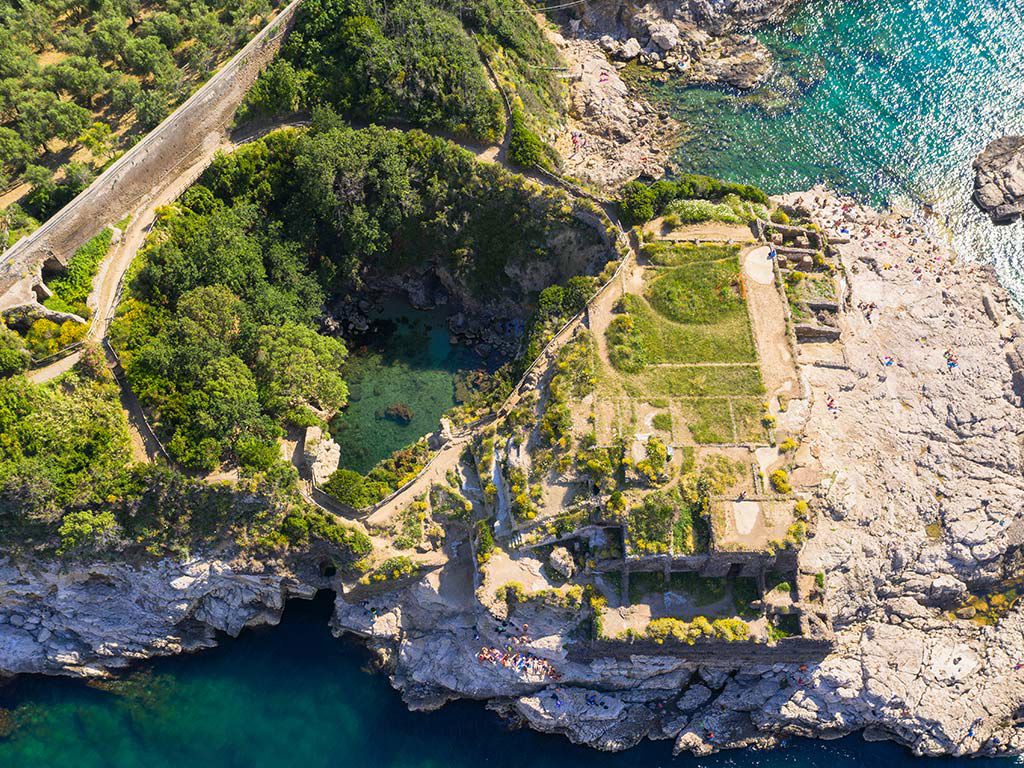Nature Excursions
-
 Punta Campanella Marine Reserve
Punta Campanella Marine ReserveThis enchanting strip of land lying on the sea divides the bays of Naples and Salerno. At its tip, the Tower of Punta Campanella and Minerva, an age-old defence against the dangers arriving from the sea (storms and Saracens), was built by the Angvins (XIV c.) on the remains of an Augustan villa. As was customary, they used the remains of the local temple to Minerva, the patron goddess of the ancient populations of Magna Graecia. According to legend this temple was built by Ulysses in person. Near the tower stands an ancient stairway with an epigraph in the Oscan language (II c. B.C.) carved into the rock. The Romans chose this location as the Imperial family’s closest landing place to the island of Capri.
-
 Ruins Of Villa Pollio Felice And Baths Of Regina Giovanna
Ruins Of Villa Pollio Felice And Baths Of Regina GiovannaThese are the fascinating remains of a majestic Roman villa, complete with landing stages, terraces and cisterns, which the poet Stazio attributed to Pollius Felix, historian and patron of the Arts, protector of Virgil and Horace. Next to the ruins is the ancient Roman nymphaeum (Bath of Diana). This bath is a naturally formed pool of water protected by a natural arc. Due to the legends surrounding this bath, the locals nicknamed it after the exuberant and temperamental noblewoman Giovanna Durazzo d’Angiò.
-
 Bay Of Ieranto Nature Area
Bay Of Ieranto Nature AreaExcursions run from dawn to one hour before sunset. In ancient times the wild and jealously protected Bay of Ieranto was considered sacred, the stage where stories and legends about gods and supermen were played out. One of the 20 Italian Marine Parks (part of it is under the care and protection of the FAI, Italian Wildlife Fund) it can also be reached by a path leading from the centre of Nerano.
-
 Emerald Grotto
Emerald GrottoNot far from Amalfi, in the enchanting bay of Conca dei Marini on the Amalfi Coast, the Emerald Grotto was discovered in 1932. Light from above, refracted and diffused, filters through a 12m deep entrance illuminating the intense emerald green of the grotto. Stalactites and stalagmites, stretch down into the water, create an extraordinary sight. A splendid Nativity scene lies on the sea bed of the grotto, at a depth of about four metres. From land the grotto can be accessed both via lifts and via a panoramic stairway, and from the sea boats can moor alongside the small jetty at the entrance.






